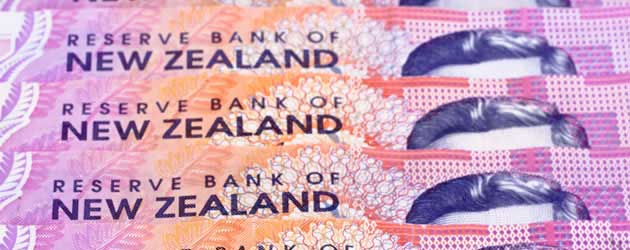
The Pound to New Zealand Dollar exchange rate (GBP/NZD) sunk to a fresh all-time record low of 1.7827 earlier this morning as demand for the ‘Kiwi’ continued to grow thanks to a number of different factors. Heavy quantitative easing from the Bank of Japan, soft Chinese trade data, and an out-of-date FOMC Minutes report all worked in the New Zealand Dollar’s favour against Sterling yesterday.
The Bank of Japan has pledged to pump around $1.4 trillion into the Japanese economy over the next two years in order to spur inflation and kick-start an economic recovery. Whilst the unprecedented scale of Central Bank Governor Haruhiko Kuroda’s new scheme has given Japan’s benchmark stock index, the Nikkei, a 9.9% boost over the past nine days, it has also sent traders flocking towards more profitable assets. The New Zealand economy has an official cash rate of 2.50% which, combined with its relative geographical proximity, has enticed large cash flows into the New Zealand Dollar.
The ‘Kiwi’ Dollar also improved as Chinese trade data printed in the red for March. The Chinese Trade Balance fell from a surplus of $15.25 billion in February to a deficit of -$0.88 billion in March. China is the largest exporter of goods in the world, and therefore its economy relies on a positive Trade Balance to bolster Gross Domestic Product. For this reason the soft trade print, combined with the recent drop-off in Consumer Price inflation, is likely to push the Chinese government towards more monetary loosening and expansionary spending. New Zealand and China share very close trade ties so it stands to reason that enhanced support for the Chinese economy will trickle through to the New Zealand economy, and this led to a surge of demand for the ‘Kiwi’ from speculative traders.
In a surprising turn of events the Federal Open Market Committee was forced to release its Minutes report from March 19-20th five hours early due to a technical glitch, which saw scores of Congressional leaders receive the paper ahead of schedule. In the interest of fairness, and to prevent traders acting on information before it was officially released to the public, the Minutes were dispatched slightly earlier than planned. However, some would argue that they were not issued early enough as they reflected a strong sense of optimism that has since been shattered by last Friday’s extremely weak US Non-farm Payrolls report.
The latest Minutes showed that the majority of FOMC policymakers foresee either, a slowdown, or an end to, the Federal Reserve’s expansive $85 billion per month easing scheme by the end of the year due to – and this is the important bit – the improved outlook of the labour market. Now remember that at the time the FOMC compiled this report they were working under the assumption that the US economy was set to follow up on February’s impressive 268K rise in employment with another strong figure of just under 200K.
With hindsight we know that the Non-farm Payrolls print for March slumped to a disappointing 88K, which in some ways renders the optimism felt by policymakers in the FOMC Minutes obsolete. For this reason markets continued to buy the risk-correlated New Zealand Dollar with the belief that Federal Reserve spending will continue to prop-up the world’s largest economy, and by default, continue to boost global growth.
The Pound to New Zealand Dollar exchange rate (GBP/NZD) picked-up marginally as the New Zealand Performance of Manufacturing Index printed slightly below the previous month’s score of 56.3 at 53.4. The milder-than-anticipated print allowed Sterling to rebound by around 0.25 cents following GBP/NZD’s -1.3 cent daily decline.
As a testament to the ‘Kiwi’s’ strength it remained at very strong levels despite a 0.2% rise in the Australian Unemployment Rate from 5.4% to 5.6%. The report showed that the Australian economy lost around -36.1K jobs during March.

Comments are closed.